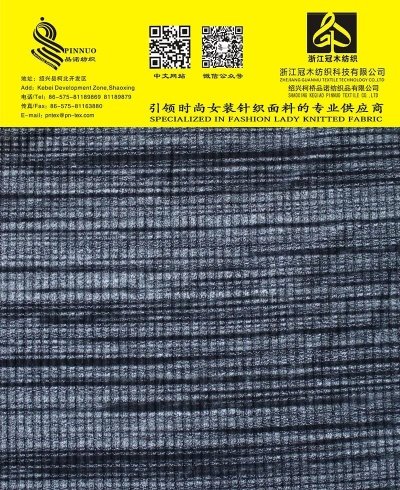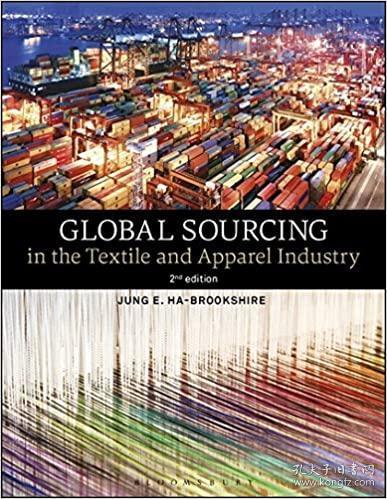The Textile Flame Retardancy Testing Equipment and Its Application
The textile flame retardancy testing equipment is a crucial tool for evaluating the fire resistance properties of textile products. This article will discuss the development of the equipment, its components, and the application of these tests in the industry. The testing equipment includes various types such as ignition sources, heat transfer measurement methods, and smoke generation measurement devices, all designed to simulate real-world fire scenarios. These instruments are used in both laboratories and production lines to ensure the fire safety performance of textile materials. The results obtained from these tests can provide important insights into product design optimization, material selection, and regulatory compliance. In summary, understanding the principles and applications of this equipment can help textile companies improve their product quality and enhance their competitiveness in the market.
Introduction to the Textile Flame Retardancy Testing Equipment
Textiles have become an integral part of our daily lives, but they are also at risk of catching fire due to various reasons. To ensure the safety of people and property, it is essential to test textiles for their flame retardant properties. The Textile Flame Retardancy Testing Equipment, commonly known as a "flame retardancy tester," is used to evaluate the resistance of textiles to combustion by measuring the time taken for the material to burn out or extinguish upon exposure to an open flame.

Components of the Textile Flame Retardancy Testing Equipment
The Textile Flame Retardancy Testing Equipment consists of several key components that work together to provide accurate results. Here's a quick overview of some of these components:
-
Open Flame Chamber: This chamber contains an open flame source that can be adjusted to simulate different levels of intensity. It is essential for accurately measuring the time it takes for the fabric to burn out.
-
Support Table: This flat base supports the fabric sample during testing, ensuring consistent conditions and preventing any movement that could affect the results.
-
Fabric Tray: This tray holds the sample in place, ensuring that it remains flat and unmoved during testing.
-
Scale/Meter: This device measures the time it takes for the fabric to burn out or extinguish. It can be connected to the computer interface to automatically record and display the data.
-
Data Acquisition Software: This software interfaces with the scale/meter and other components of the tester to collect and analyze the data. It provides users with visual representations of the results and allows for easy interpretation and reporting of results.
Applications of Textile Flame Retardancy Testing
The Textile Flame Retardancy Testing Equipment is widely employed in various industries such as clothing, home furnishings, automotive upholstery, and electronics manufacturing. The following are some of its applications:
-
Quality Control: Manufacturers use this equipment to ensure that their products meet the required flame retardancy standards. By conducting regular tests, they can identify potential issues early on and take corrective action to improve product quality.
-
Regulatory Compliance: Industries must follow specific regulations set by government agencies regarding the flame retardancy of their products. The Textile Flame Retardancy Testing Equipment helps businesses comply with these regulations by providing them with accurate and consistent results.
-
Research and Development: Industries conduct research and development to find new ways to enhance the flame retardancy of their products. By using this equipment, researchers can test various materials and formulations to determine which ones offer the best protection against fire.
Case Study: Textile Flame Retardancy Testing Equipment in the Fashion Industry
A popular application of the Textile Flame Retardancy Testing Equipment is in the fashion industry, where designers and manufacturers need to ensure that their clothes meet high standards of flame retardancy. For example, a major fashion brand was struggling to meet the strict European Union's flame retardancy requirements for its clothing products. They decided to invest in a Textile Flame Retardancy Testing Equipment to conduct regular testing of their products.

After implementing the tester, the brand saw a significant improvement in their product quality control. Their clothes became much safer to wear and protected against fire more effectively than before. Moreover, their products were now meeting all necessary regulatory requirements, which allowed them to expand into new markets.
Conclusion
In conclusion, Textile Flame Retardancy Testing Equipment is a crucial tool for ensuring that textiles meet the necessary standards of flame retardancy. It plays a significant role in quality control, regulatory compliance, and product research and development. By investing in this equipment, businesses can protect their customers, employees, and assets from fire-related accidents and lawsuits.
纺织品阻燃试验仪简介
纺织品阻燃试验仪是一种用于测试纺织品阻燃性能的仪器设备,它通过模拟实际使用环境中的火焰条件,对纺织品进行阻燃性能的测试,以确保其在特定应用场景下的安全性和可靠性,该设备广泛应用于纺织、服装、家居装饰等领域,对于保障消费者安全和提高产品质量具有重要意义。
纺织品阻燃试验仪的工作原理
纺织品阻燃试验仪主要基于热释放速率(HRR)和烟雾释放速率(SGR)等测试指标,通过模拟火焰条件下的纺织品燃烧过程,来评估其阻燃性能,该设备通过一系列传感器和控制系统,实时监测纺织品在火焰条件下的燃烧过程,并记录其热释放速率和烟雾释放速率等参数,通过对比不同纺织品在不同条件下的阻燃性能指标,可以评估其阻燃效果和安全性。
纺织品阻燃试验仪的应用案例
某品牌纺织品阻燃性能测试
某品牌在纺织品生产过程中,为了确保产品的安全性和可靠性,对其生产的纺织品进行了阻燃性能测试,该品牌采用了纺织品阻燃试验仪进行测试,经过测试,该设备发现该品牌生产的纺织品在模拟火焰条件下具有较好的阻燃性能,能够有效防止火灾事故的发生,该设备还提供了详细的阻燃性能报告,为该品牌的产品质量控制提供了有力支持。
纺织品阻燃性能提升措施
为了进一步提高纺织品阻燃性能,一些纺织企业采用了纺织品阻燃试验仪进行测试,通过对比不同纺织品在不同条件下的阻燃性能指标,可以发现某些纺织品在高温、高湿等特殊环境下仍需加强阻燃处理,这些企业采取了相应的措施,如增加阻燃剂的使用量、优化生产工艺等,以提高纺织品的阻燃性能,这些企业还加强了对生产过程的监控和管理,确保产品质量和安全。
纺织品阻燃试验仪的测试指标及操作步骤

测试指标:
(1)热释放速率(HRR):模拟纺织品在火焰条件下的燃烧过程,记录其热释放速率的变化情况。
(2)烟雾释放速率(SGR):模拟纺织品在火焰条件下的烟雾生成情况,记录其烟雾释放速率的变化情况。
(3)燃烧稳定性:评估纺织品在火焰条件下的燃烧稳定性,包括燃烧速度、火焰颜色等指标。
操作步骤:
(1)准备样品:将待测试的纺织品样品准备好,确保样品尺寸、形状和材质符合测试要求。
(2)连接仪器:将纺织品阻燃试验仪与电脑连接,并按照仪器说明书进行操作。
(3)设置参数:根据测试要求设置相应的参数,如火焰类型、温度、时间等。
(4)进行测试:将纺织品样品放置在仪器中进行测试,记录相关参数和数据。
表格补充说明(以纺织品阻燃试验仪为例)
以下是纺织品阻燃试验仪的表格补充说明:
| 测试指标 | 描述 | 设备参数 | 使用范围 |
|---|---|---|---|
| 热释放速率(HRR) | 模拟纺织品在火焰条件下的燃烧过程,记录其热释放速率的变化情况 | 高精度传感器、控制系统 | 适用于各种纺织品样品 |
| 烟雾释放速率(SGR) | 模拟纺织品在火焰条件下的烟雾生成情况 | 烟雾生成量检测器 | 高温、高湿等特殊环境适用 |
| 燃烧稳定性 | 评估纺织品在火焰条件下的燃烧稳定性 | 火焰类型选择、温度控制等 | 根据具体应用场景选择合适的火焰类型和温度范围 |
| 操作步骤 | 准备样品、连接仪器、设置参数、进行测试 | 根据仪器说明书进行操作 | 无具体操作步骤限制 |
结论与展望
纺织品阻燃试验仪作为一种重要的纺织产品检测设备,对于保障消费者安全和提高产品质量具有重要意义,随着纺织行业的不断发展,对于纺织品阻燃性能的要求也越来越高,加强纺织品阻燃性能的测试和提升措施的研究和应用,对于促进纺织行业的发展和提高产品质量具有重要意义,随着科技的不断进步和新型材料的不断涌现,纺织品阻燃试验仪将会更加智能化、高效化和便捷化,为纺织行业的发展提供更加有力的支持。
Articles related to the knowledge points of this article:
The Transformative Power of Advanced Textile Materials
The Essential Guide to Textile Export Coding
The Fabric of Luxury:An In-depth Look at Shangbo Hotel Textiles
Global Trade Landscape of Textiles Between China and the US
The Global Success Story of Zhejiang Hongxiang Textiles
The Art of International Trade in Textiles:A Comprehensive Guide



